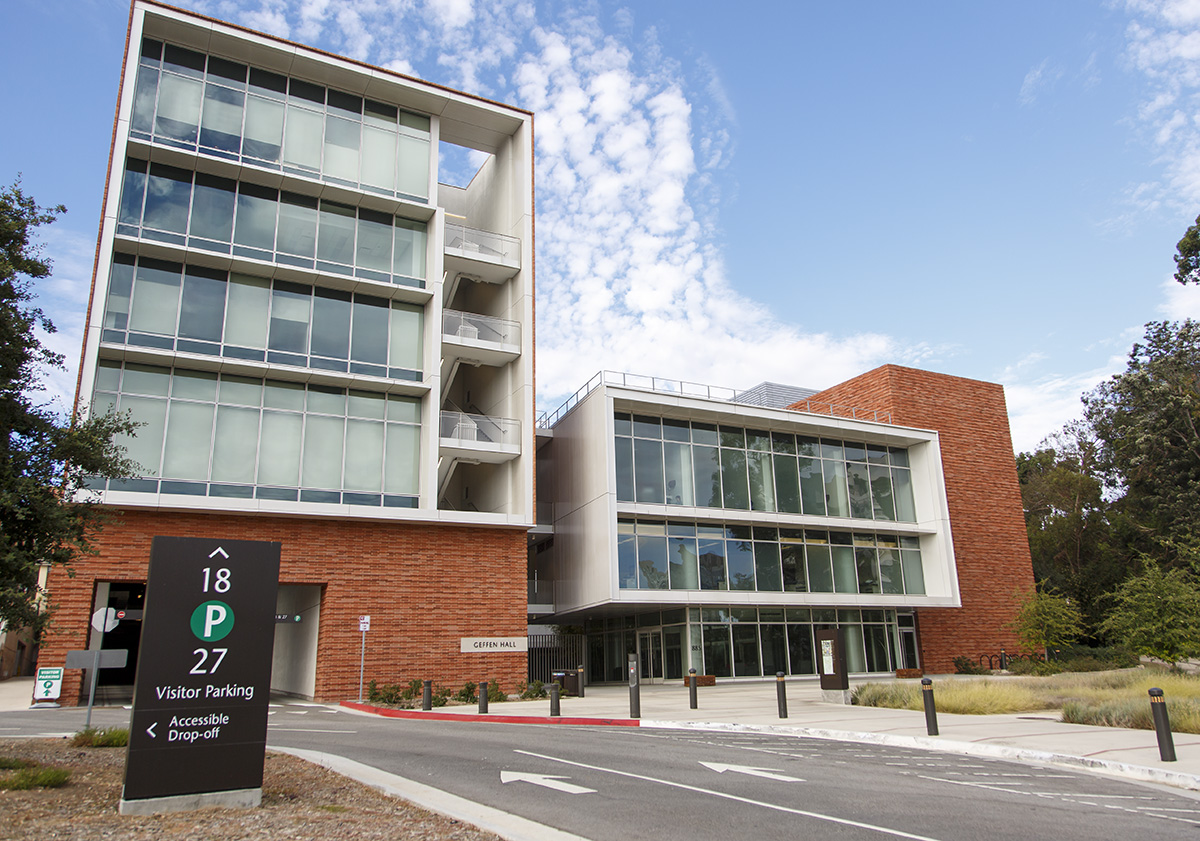Study associates affirmative action bans with decreases in medical school diversity

The David Geffen School of Medicine (pictured) is one of the central medical complexes at UCLA. (Daily Bruin file photo)
State bans on affirmative action are associated with striking declines in racial and ethnic diversity in public medical schools, according to a recent UCLA-led study.
The study examined the percentage of students from underrepresented backgrounds in United States public medical schools between 1985 and 2019 and found there was a decrease in the percentage of Black, Hispanic, American Indian or Alaska Native, and Native Hawaiian or other Pacific Islander students.
Affirmative action refers to a set of policies that seek to address discrimination against applicants on the basis of race, creed, color and national origin, according to Cornell Law School. California passed Proposition 209 in 1996, which effectively removed affirmative action in the state of California, making it illegal to consider race, sex, color, ethnicity or national origin in hiring and admissions processes.
Dr. Dan Ly, the study’s lead author and an assistant professor of medicine in the division of general internal medicine and health services research, said in an emailed statement that he has had a longtime interest in health care disparities in the U.S.
The authors analyzed the diversity of 21 public schools in eight states with affirmative action bans and compared them to 32 public universities in 24 states that have no bans, Ly said. UCLA, UC San Francisco and the University of Michigan were some of the institutions examined in the study, he added.
Although he had hypothesized that state bans would reduce the diversity of medical schools, Ly said he was surprised to find that enrollment of underrepresented students had decreased by more than one-third of its pre-ban amount within five years.
Dr. Anupam Jena, an associate professor of health care policy at Harvard Medical School and one of the study’s authors, said the implementation of these bans varies across states. With an upcoming Supreme Court hearing involving affirmative action, which would determine the lawfulness of race-conscious admissions programs, the authors saw an opportunity to further study the issue, Jena added.
Jena said one of the biggest challenges of the study was the uncertainty about whether the diversity issue occurs purely in medical schools or if it also exists at the undergraduate level, which would consequently affect the postgraduate admissions process.
As a result of Proposition 209, the UC has sought to expand diversity and inclusion efforts in several ways.
Dr. Keith Norris, a professor of medicine and the executive vice chair for the Department of Medicine Office of Equity, Diversity and Inclusion, said the UC uses holistic review in admissions to take into consideration the impact of an applicant’s background on their learning.
Norris said this strategy ensures broader representation for individuals going into medical school but does not address equity and justice sufficiently.
However, according to a UC Office of the President press release, 43% of admitted freshmen belonged to underrepresented racial and ethnic groups, making the undergraduate class of 2025 the most diverse class admitted by the UC so far.
The UC has also seen a substantial increase in the number of women and Asian Americans enrolled in its medical schools, but the number of Black, Hispanic, Native American and Native Hawaiian and Pacific Islander students enrolled has been relatively low, Norris added.
Despite increases in diversity, there has not been justice and equity for all groups, Norris said. Affirmative action is a way of trying to achieve some level of equity in education and society, he added.
Norris said he endorses a reconsideration of the affirmative action ban because it provides those from marginalized or underrepresented backgrounds a boost they may not receive because of institutional barriers. It is not merely admitting students based on race, he added.
Zachary Bleemer, a postdoctoral fellow at Opportunity Insights at Harvard University and the author of “Affirmative Action, Mismatch, and Economic Mobility after California’s Proposition 209,” said in an emailed statement that affirmative action radically alters the universities that are available for Black and Hispanic students.
Among these students, many never got the chance to attend UC campuses because of Proposition 209, which banned race-based affirmative action programs at public California universities in 1998, Bleemer said.
“If not for California’s affirmative action ban, then today there would be hundreds, potentially over a thousand more high-earning young Black and Hispanic workers in California,” Bleemer added.
Furthermore, the study reports that medical school admissions policies are important factors in advancing diversity and equity, especially in health care. The findings suggest pre-med or “pipeline” training programs from K-12 through undergraduate studies are helpful but not enough, according to the study.
One of the solutions to improve disparities in health care is to increase racial and ethnic diversity among physicians, Ly said. The U.S. has done poorly at increasing the diversity of its physicians, which the study’s writers hypothesized might be the result of state bans on affirmative action, he added.
“Evidence shows that when patients see a physician who looks like them and may better understand them, better care results,” Ly said.
Norris said the study’s results are unsurprising because more work needs to be done to achieve equity earlier on – before affirmative action comes into play.
The impact of the affirmative action ban is predictable because there are issues earlier on in education for marginalized groups, such as community divestment and other socioeconomic challenges, Norris said.
The UC is a conservative institution, and many higher-ups in the UC are not held accountable for discrimination, Norris said. Although the UC system has improved, affirmative action is a concrete way of promoting equity in health, he added.
“Affirmative action says, ‘Let’s continue to make sure that we can take promising individuals with lots of potential and get them in,'” Norris said.


